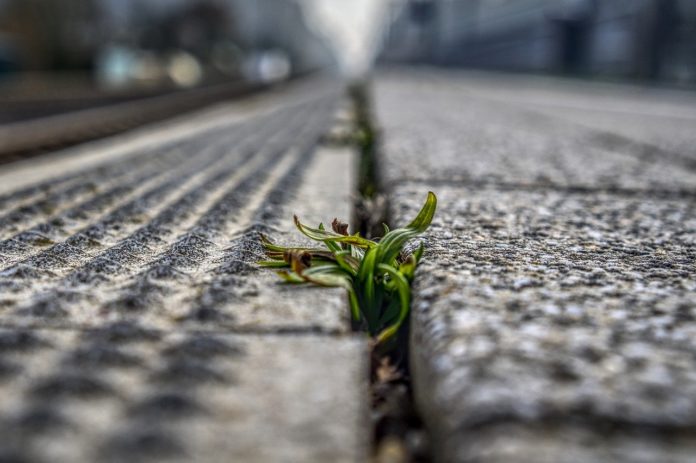Concrete is the world’s most used construction material.
It makes sense to stop and think about the environmental impact it has.
Almost everything in the construction industry is made up of concrete or has some aspect of concrete. Statistics has it that about 5 billion cubic yards of concrete are produced annually on the global scale. This is a captivating figure bearing in mind that it will be used in future constructions in the world.
Numerous people in the world may have a hint of its uses, however, they don’t have the bigger picture of its uses. Having been used since the ancient days, it poses some unique characteristics of durability and strength that are undeniable, however, some say it has a negative impact due to its emission of carbon during production. It’s in our building, roads, tunnels and also runaways. There is almost no part of our civilization that you can imagine of that doesn’t use concrete.
Having worked with concrete in a previous business (I made garden statues), I always wondered how my work impacted the environment. There was a lot of dust when I mixed it and when it got on my skin, it left me with a burning sensation and dryness.
I didn’t think it was too good for the environment but I never did the research until now. For the sake of all of us working in an industry that uses concrete, I want to share with you the findings of my research and hopefully help you understand the truth. Here is what you can expect to learn from this article:
- The History of Concrete
- The Uses of Concrete
- Concrete’s Drawbacks
- Eco Friendly Alternatives to Concrete
- We’ll finish off by determining if it’s Eco-friendly or not
Let us begin!
What is the Origin of Concrete?
Production of concrete in small-scale dates back to the 6500 B.C.
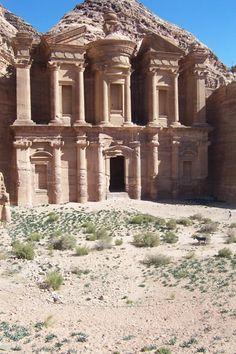
Pioneered by Nabataea traders, who occupied and controlled a series of oases in Jordan. They discovered the advantages of crushed hydraulic lime. Apparently, if you mixed it with water, it presented self-cementing properties.
If you’re not sure who these people were, some of you will recognize this great structure built by the Nabataean people.
By 700 B.C. They had learned to build kilns, using them to create mortar for rubble-wall houses, concrete floors, and underground waterproof cisterns. This new discovery of concrete cisterns was kept secret, it was the key structure that helped them thrive in the desert. Some of these ancient structures are still strong to date.
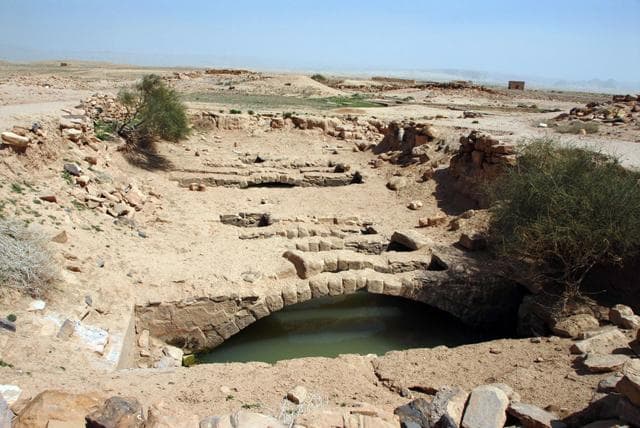
I always love to look into the history of every subject I research, who would have known it was invented way back in the desert? I always assumed the Romans had invented concrete. Anyway, there’s always something new to learn but we’ve had our fun, let’s move on. Now that we know a bit of its history, let’s look at the uses:
What are the Uses of Concrete?
I think we all know the various uses of concrete but to remind us, here is a quick list of all the ways it’s used:
- To construct buildings. Most construction of homes is made using concrete. It is chosen over wood as it is stronger and more durable. Concrete structures help us to keep our homes safe from rodents and other small insects as they cannot burrow through the concrete wall
- To build floors. Pretty much all houses have a concrete foundation and with sturdy concrete floors, you can enjoy a nice soundproof barrier between levels.
- To build underground bunkers. Concrete is preferred as it is cost effective and can hold up against all-weather conditions. Its superior structural reliability gives it an added advantage as it can survive even earthquakes, unlike other materials.
- To build bridges. High-performance concrete reinforced with steel provides extremely durable bridges.
- To build tunnels. This helped greatly increase the efficiency of our roads systems, enabling the innovation of underground LRT systems.
- To build roads. Smooth roads can be constructed using concrete, making them highly efficient at enabling a swift movement of any vehicle. Tarmacked roads are very attractive and greatly reduce the travel speed between destinations.
- To create decorations. Concrete Lions, statues and all sorts of garden decors that help enhance the look of your home and yard.
It’s amazing to think of all the uses of concrete, in you think of all those sections and break them down even further, you could go on for days listing concrete products.
Now that we know the uses, let’s scratch the surface and get to what matters on the environmental level:
What are the Drawbacks of Concrete?
Here are some facts about concrete concerning its environmental drawbacks that affect our global ecosystem negatively.
- It can cause water pollution. Water is life and it’s considered a basic need for both plants and animals. For instance, when you wash your equipment with water and let it go down the drain or down your driveway, it will eventually make its way to local waterways and adversely affect the aquatic life due to high PH level.
- It contributes to greenhouse gases. Portland cement is used as a binding agent in concrete. If you break it down, it accounts for about 10% of the concrete mass. The thing is, cement production and extraction is quite taxing, it is a considered a major contributor to atmospheric greenhouse gases. The higher the production of cement (which is incredibly large), the higher the amount of carbon dioxide released into the atmosphere. According to this EPA study, about 46% of theses emission is always as a result of the combustion of coal and oil. 54% of the other emissions are as a result of the chemical process of making cement, which involves the conversion of limestone to calcium oxide and CO2.
- It leads to environmental degradation. It disrupts the natural habitats of flora and fauna. There are high levels of noise made and a great amount of dust produced. This may lead to health complications to any breathing organism and especially in areas with a high population. Areas of extraction, if left uncovered, pose a danger to people and all sorts of animals. Animals just can’t adapt to a change of environment that quickly and biodiversity will be greatly reduced.
- It limits the availability of land. It affects soils due to acidity, hence making land unusable for agricultural production. This hinders various aspects of production and brings health complications to people by infiltrating our water systems.
There is a need to look away from traditional concrete and migrate to better and more eco-friendly concrete sources. Anything that can have a lesser impact on the environment would be gratifying. Various researchers have been put forward in order to help minimize the menace of pollution by concrete and its production. Here is what they have come up with:
What are the Eco-friendly Alternatives to Concrete on the Market?
Due to growing interest in sustainable development, various players in the construction industry have been motivated to use more environmentally friendly materials, keeping in mind that environmental preservation is crucial and has to be put into consideration. Here are some of the top alternatives you can look at:
-
Novacem
A potentially sustainable alternative concrete has been created in order to produce more environmentally friendly environment. Scientists at have developed a new form of concrete that can effectively absorb large amounts of carbon dioxide as it hardens. Novacem’s new version of concrete is made up of different types of raw materials such as magnesium sulfate which require less heating. According to Novacem, each ton of cement absorbs up to 0.6 tonnes of CO2.
Unfortunately, despite their amazing product, it seems they have disappeared from the face of the planet. I can’t find any traces of what happened, if you know, please mention in the comment section.
-
Quikrete’s Green mix Concrete
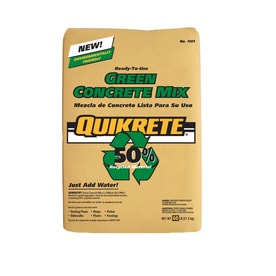
The use of green concrete has become popular in many countries. It has unique characteristics because one of its raw materials is waste. The procedure of manufacture this concrete is that it has to use materials obtained from viable green materials other than non-sustainable resources.
This has been made possible by researchers from the faculty of Engineering in the University of Malaysia who have come up with green mix concrete. This Eco-friendly concrete is made up of new raw materials which include fly ash, recycled concrete aggregates, and aluminum fibers.
Fly ash is a waste product from coal power plants, while aluminum cans can be processed into chopped fibers and used as reinforcements in concrete. Green concrete has low cement/carbon ratio per unit produced. It’s designed for durability and strength of built structures. Above all, as we seen with quikcrete, it has a potential for commercialization as it offers alternative to concrete.
-
Rammed earth
Being natural, dirt can also be used as a proper alternative to concrete. Rammed earth is a technology that has been used for a long time since the birth of civilization. It is known to be long lasting and according to the building shown in this picture, it can be used in sophisticated ways like concrete. It has a similar texture to concrete and is tamped down tightly in wooden forms to realize the desirable shape. Modern rammed earth buildings can be made safer by using rebar or bamboo. With mechanization, we can also reduce the amount of labor required as compared to the traditional method.
-
Bamboo
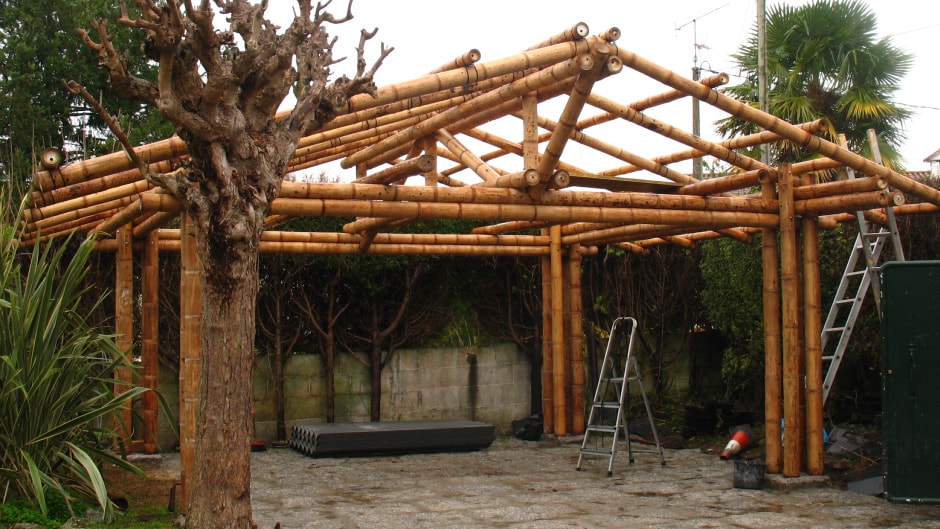
Its combination of tensile strength, lightweight and fast-growing renewable nature makes it ideal building material. It is also locally sourced in various parts of the world and has been available for various usages. It can be used for framing structures, and easily replaces expensive and heavy imported building materials. Thus it is cost effective and an ideal replacement for concrete.
-
Mycelium
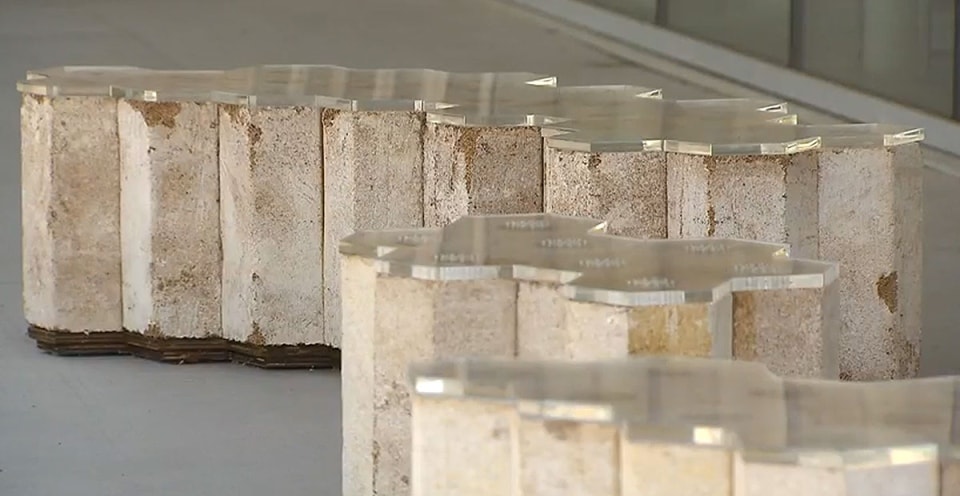
This is an ambitious futuristic building material that is made up of fungi and mushroom. It can be allowed to thrive around the composite of some other materials like ground up straw, which is then grown in molds. Finally, it’s air-dried and ultimately creates a lightweight and strong brick.
Can Concrete be Eco-Friendly?
It’s clear that concrete and its high levels of carbon dioxide emissions can be very toxic and hazardous to both fauna and flora.
Although in conclusion, we have discovered that concrete can be Eco-friendly, we just have to minimize concrete pollution. It’s upon us to take up the challenge and help minimize this pollution by ensuring we use and develop Eco-friendly alternatives. We should ensure concrete waste is recycled and used in any other alternatives such as road fillings.
The amounts of concrete used should be measured carefully in order to avoid excess that ends up becoming waste. We should keep in mind the importance of aquatic life and take good care of it by avoiding releasing toxic concrete wastes into waterways.
Let’s be mindful of our own environment and consider it deeply within our moral conscience. This way, we avoid complications in our health and avoid any future environmental impact that might just end up being disastrous.
Thanks for reading and if you enjoyed this article, you might also enjoy these too:
– All The Facts About Bamboo That You Need To Know
– 10 Advantages of running an Eco-Friendly business
– 8 Uses Of Cork For Your Eco-Friendly Business

